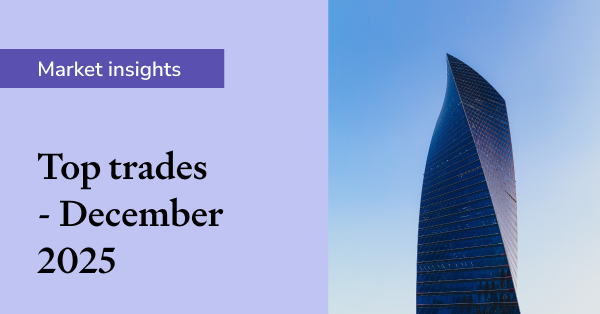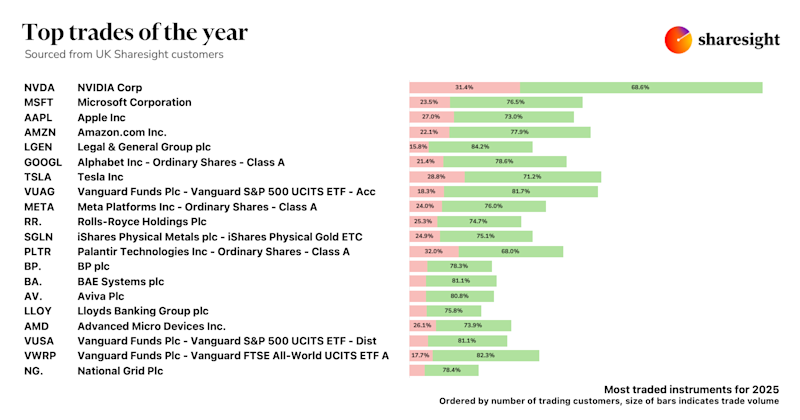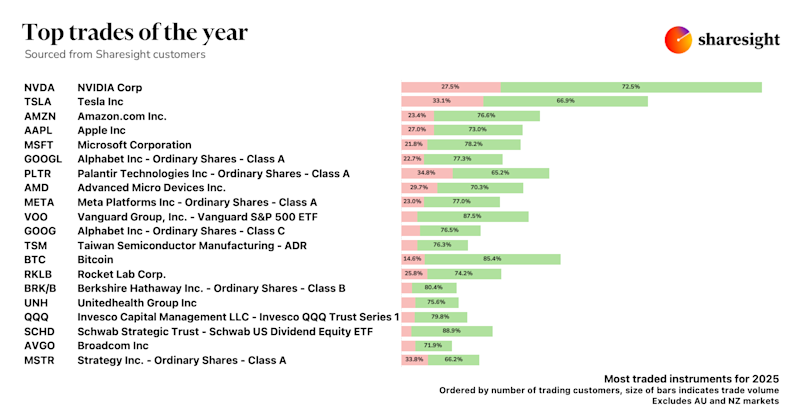Morningstar Individual Investor Conference: Event wrap-up
An audience of 600 attendees had the opportunity to listen and learn from some of Australia’s top investment experts at the Morningstar Individual Investors Conference, held at the Wesley Conference Centre in Sydney on the 17th of October 2019.
The team from Sharesight were well represented, with both a Sharesight exhibition stand that was an excellent opportunity to engage with users face to face, plus a presentation from Sharesight CEO Doug Morris where he shared key data and insights on the performance of SMSF portfolios tracked in Sharesight.

Morningstar Individual Investor Conference takeaways
Our key takeaways from across the various sessions at the event are below.
The macro investment outlook - has Australia run out of luck?
Dr Shane Oliver - AMP

Reminded the audience of nine key lessons for investors:
-
Make the most of the power of compound interest
-
Don’t get thrown off by the cycle
-
Invest for the long term
-
Diversify
-
Turn down the noise
-
Buy low and sell high - selling after a 20% fall just locks in a loss
-
Beware the crowd at extremes - shares bottom at the point of maximum bearishness
-
Focus on investments you understand and that provide decent, sustainable cash flows
-
Seek advice
Economic and investment outlook:
-
Global growth slowing but still okay - 2018: 3.6%, 2019: 3.2%
-
Rising risk of global recession from US trade wars - but it should be avoided
-
2019 GDP growth: China 6%, US 2%, Eurozone 0.7%, Japan 0.6%, Australia 1.9%
-
Inflation is below target in most countries - hence central bank easing
-
RBA to cut the cash rate to 0.25% - probably quantitative easing next year
-
$A to weaken further
-
Continuing low returns from bank deposits and bonds
-
Shares vulnerable to a short term pull back - but should provide okay returns over next 6.12 months
-
Key risks: trade war, President Trump, Iran tensions, global growth, China, Australian property market
The rise and rise of SMSFs: what does the future hold?
Robin Bowerman, Peter Hogan, Liam Shorte, Graham Hand (moderator).

(All answers paraphrased)
Robin
-
Increasing diversification in SMSFs particularly overseas assets over the last 3 years
-
Where before SMSFs were primarily a tax vehicle to invest in particular assets like property with little diversification that is changing
Graham
- ATO SMSF figures understate overseas exposure, since most SMSFs don't invest directly on overseas exchanges - rather, they use ETFs to gain international exposure
Robin
-
ASIC figures on SMSF costs of $13k per year overblown, nobody in the room is paying that much, but maybe if you factor in financial advice as well
-
Sensible questions being asked by ASIC: "why is there only one asset in your SMSF (a property)? How does that ensure you're diversified?"
-
$150k in assets yardstick to set up an SMSF might make sense for a 30yo but not as much for someone older
"Identify a couple of major technical issues for SMSFs"
Peter
-
New rules July 1 2017 still flowing through
-
Average account balance much higher and dealing with the $1.6m cap is an issue
-
Dealing with death benefits under current rules is causing headaches
"How are clients coping with generating income with rates so low?"
Liam
-
Diversified ETFs
-
Unlisted property
-
Infrastructure - SMSF investors like the idea of things they can see that generate income
-
Already have enough exposure to Australian equity
-
Still need to have that conservative part of your portfolio, but maybe enhance with a bit of extra risk for a portion that would otherwise be allocated to fixed interest investments to chase income
"What should an SMSF trustee be paying for an accountant + platform + advice?"
Peter
-
No set up or wind up fees
-
Depends how much you can do yourself
-
$1,500 in admin costs is not unreasonable for someone fairly active with an accountant that preps your annual statement
-
$2,000 for an all-in-one SMSF platform
-
Financial advice obviously costs extra on top of the above
-
In an uneventful year 2.5k wouldn't be unreasonable all up
A glimpse into SMSF portfolios
Doug Morris - CEO Sharesight

Doug dove into the numbers we see at Sharesight for SMSF portfolios and used those figures to both debunk and confirm some common beliefs about SMSFs in Australia.
Do SMSF portfolios focus on dividend yield and franking credits?
Possibly, however the most held 5 stocks aren’t dissimilar to the 5 highest market cap ASX stocks.

Are SMSFs underweight exposure to technology stocks?
While the ASX is considered to be overweight on finance and mining stocks, SMSFs tracked in Sharesight are not underweight technology, both Technology Services and Health Technology stocks feature prominently in SMSF portfolios.

Do SMSFs underperform APRA funds?
On average the SMSFs tracked in Sharesight perform similarly to slightly better than APRA regulated super funds.

Watch Doug's full presentation here
Embedded content: https://www.youtube.com/embed/2S9b0Y5QuyA
Individual investors love Sharesight
Sharesight was built for the needs of individual investors like you, and makes it easy to keep track of your investment portfolio or SMSF. Here’s how:
-
Automatically track your daily price & currency fluctuations, and handle corporate actions such as share splits.
-
Run powerful tax reports built for Australian investors, including Capital Gains Tax, Unrealised Capital Gains, and Taxable Income
-
See upcoming dividend payments with the Future Income Report.
-
Get the full picture of your investment performance, including the impact of brokerage fees, dividends, and capital gains with Sharesight’s annualised performance calculation methodology.
FURTHER READING

Sharesight users' top trades – December 2025
Welcome to the December 2025 edition of Sharesight’s monthly trading snapshot, where we look at the top buy and sell trades by Sharesight users over the month.

Top trades by UK Sharesight users in 2025
Welcome to the 2025 edition of our UK trading snapshot, where dive into this year’s top trades by the Sharesight userbase.

Top trades by global Sharesight users in 2025
Welcome to the 2025 edition of our global trading snapshot, where we dive into this year’s top trades by Sharesight users around the world.